Contents
1 Introduction
1.1 Prologue
1.2 Maritime radar
1.3 The modelling of radar returns from the sea
1.4 Outline of the book
2 The characteristics of radar sea clutter
2.1 Overview
2.2 The sea surface
2.3 Sea clutter reflectivity
2.4 Amplitude statistics
2.4.1 The compound nature of sea clutter amplitude statistics
2.5 Frequency agility and sea clutter
2.6 Observations of amplitude distributions
2.7 Polarisation characteristics
2.8 Clutter spikes and modulations
2.9 Coherent properties of radar sea clutter
2.10 Spatial characteristics
2.10.1 Range ACF
2.10.2 Power spectrum analysis of range-time intensity plots
3 Modelling radar scattering by the ocean surface
3.1 Introduction
3.2 The sea surface
3.3 EM scattering from the sea at high grazing angles
3.4 Imaging ocean currents at high grazing angles
3.5 The composite model for scattering at medium grazing angles
3.6 Scattering at low grazing angles: beyond the composite model
3.7 Scattering from breaking waves
3.8 Average backscatter from the ocean at low gazing angles
3.9 Imaging ocean currents at low grazing angles
4 Statistical models of sea clutter
4.1 Introduction
4.2 Gaussian clutter models
4.3 Non-Gaussian clutter
4.3.1 Compound models of non-Gaussian clutter
4.3.2 The gamma distribution of local power and the K distribution
4.3.3 A coherent signal in K-distributed clutter
4.3.4 K-distributed clutter with added thermal noise
4.3.5 Phases of homodyned and generalised K processes
4.3.6 Applications to interferometric and polarimetric processing
4.4 Spikes in clutter
4.4.1 The Class A and breaking area models
4.4.2 Clutter spike models and K phenomenology
4.4.3 An analysis of spiky clutter data
4.5 The lognormal,Weibull and other non-Gaussian distributions
4.6 Coherent clutter modelling
4.6.1 The Doppler signatures of different scattering events
4.6.2 Some typical experimental results
4.6.3 Models of Doppler spectra
5 The simulation of clutter and other random processes
5.1 Introduction
5.2 Generating un-correlated random numbers with a prescribed
5.3 Generating correlated Gaussian random processes
5.4 Fourier synthesis of random processes
5.5 Approximate methods for the generation of correlated gamma distributed random numbers
5.6 The correlation properties of non-Gaussian processes generated by MNLT
5.7 Correlated exponential andWeibull processes
5.8 The generation of correlated gamma processes by MNLT
6 Detection of small targets in sea clutter
6.1 Introduction
6.2 Statistical models for probabilities of detection and false alarm
6.3 Likelihood ratios and optimal detection
6.4 Some simple performance calculations
6.5 The generalised likelihood ratio method
6.6 A simple Gaussian example
6.6.1 A likelihood ratio based approach
6.6.2 Generalised likelihood ratio based approach
6.7 The detection of a steady signal in Rayleigh clutter
6.7.1 Generalised likelihood ratio based approach
6.7.2 Peak within interval detection
6.8 Applications to coherent detection
6.9 The estimation of clutter parameters
6.9.1 Maximum likelihood estimators for gamma and Weibull parameters
6.9.2 Tractable, but sub-optimal, estimators for K and Weibull parameters
6.10 Implications of the compound form of non-Gaussian clutter
6.10.1 Modified generalised likelihood ratio based detection
6.10.2 Modified peak within interval detection
6.11 Concluding remarks
7 Imaging ocean surface features
7.1 Introduction
7.2 The analysis of correlated Gaussian data
7.2.1 X processing
7.2.2 Xa processing and the whitening filter
7.2.3 Xo processing
7.3 The Wishart distribution
7.3.1 The real Wishart distribution
7.3.2 The complex Wishart distribution
7.4 Polarimetric and interferometric processing
7.4.1 X processing of interferometric and polarimetric data
7.4.2 Phase increment processing of interferometric data
7.4.3 Coherent summation and discrimination enchantment
7.5 Feature detection by matched filtering
7.6 False alarm rates for matched filter processing
7.6.1 A simple model for the global maximum single point statistics
7.6.2 The global maximum of a 1D Gaussian process and the matched filter false alarm curve for a time series
7.6.3 Extension to 2D matched filters
7.7 A compound model for correlated signals
8 Radar detection performance calculations
8.1 Introduction
8.2 Radar equation and geometry
8.3 Normalised sea clutter RCS models
8.4 Sea clutter fluctuations and false alarms
8.5 Target RCS models and detection probability
8.6 Detection performance
8.7 Modelling other types of radar
9 CFAR detection
9.1 Introduction
9.2 Adaptation to changing clutter amplitude
9.2.1 Control of received signal dynamic range
9.2.2 Log FTC receiver for Rayleigh clutter
9.2.3 Cell-averaging CFAR detector
9.2.4 Linear prediction techniques
9.2.5 Non-linear predictors
9.3 Adaptation to changing clutter pdf
9.3.1 Fitting to a family of distributions
9.3.2 Distribution-free detection
9.3.3 Estimation of the K distribution shape parameter
9.3.4 Estimation of aWeibull shape parameter
9.4 Other CFAR detection techniques
9.4.1 Site specific CFAR
9.4.2 Closed loop systems
9.4.3 Exploitation of transient coherence
9.4.4 Scan-to-scan integration
9.5 Practical CFAR detectors
10 The specification and measurement of radar performance
10.1 Introduction
10.2 Performance specification issues
10.2.1 Discussion
10.2.2 Adaptive radars
10.2.3 Specification of adaptive systems
10.2.4 Practical performance specification
10.3 Performance prediction
10.3.1 Clutter amplitude statistics
10.3.2 Clutter speckle component
10.3.3 False alarms
10.4 Measuring performance
10.4.1 Trials
10.4.2 Factory measurements
10.4.3 Modelling and simulation
10.5 Measurement methods and accuracies
10.5.1 Probability of detection
10.5.2 Probability of false alarm PFA
10.5.3 Statistical analysis of trials
Appendix 1 Elements of probability theory
A1.1 Introduction
A1.2 Finite numbers of discrete events
A1.3 An infinite number of discrete events
A1.4 Continuous random variables
A1.5 Functions of random variables
A1.6 The normal process
A1.7 The time evolution of random processes
A1.8 Power spectra and correlation functions
A1.9 The complex Gaussian process
A1.10 Spatially correlated processes
A1.11 Stochastic differential equations and noise processes
A1.12 Miscellaneous results
Appendix 2 Some useful special functions
A2.1 Introduction
A2.2 The gamma function and related topics
A2.3 Some properties of the K distribution pdf
A2.4 The Bessel functions In, Jn
A2.5 Expansions in Hermite and Laguerre polynomials
Appendix 3 Scattering from a corrugated surface
A3.1 The integral formulation of the scalar scattering problem
A3.2 Helmholtz equation Green's functions in two and three dimensions
A3.3 Derivation of the Fresnel formulae
A3.4 Approximate de-coupling of the integral equations - the impedance boundary condition
A3.5 Scattering by a perfectly conducting surface
A3.5.1 The physical optics or Kirchoff approximation
A3.5.2 Small height perturbation theory - PC case
A3.5.3 The half-space and reciprocal field formalisms
A3.6 Scattering by an imperfectly conducting surface: small height perturbation theory
A3.7 Numerical solutions of the scattering problem
A3.7.1 Scattering from a perfect conductor
A3.7.2 Scattering from an imperfect conductor; modification of the F/B method
A3.8 Incorporation of the impedance boundary condition in F/B calculations
A3.9 Evaluation of adjunct plane contributions
A3.10 Summary
Index
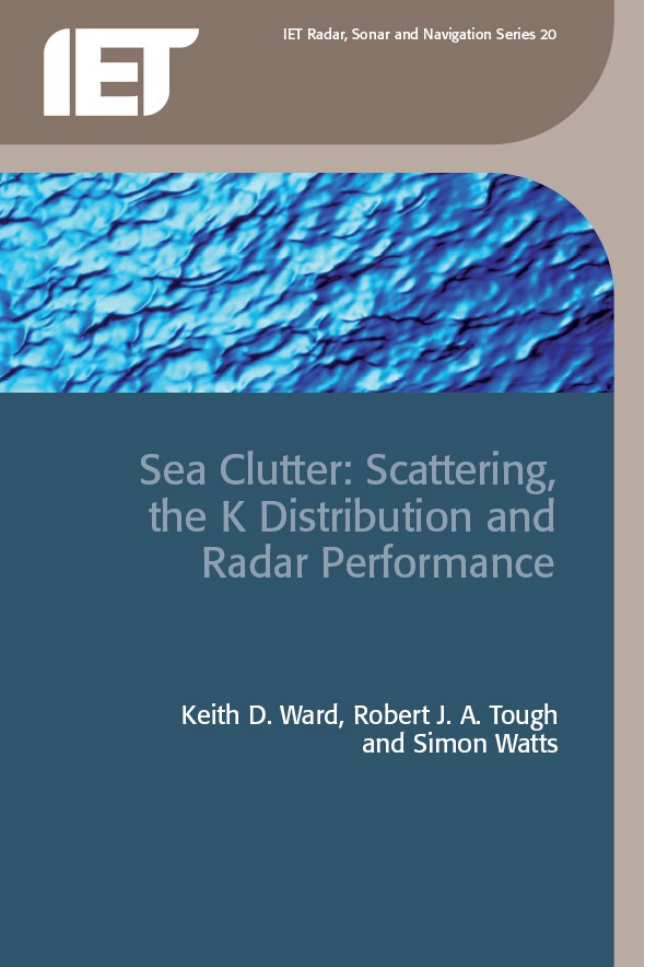

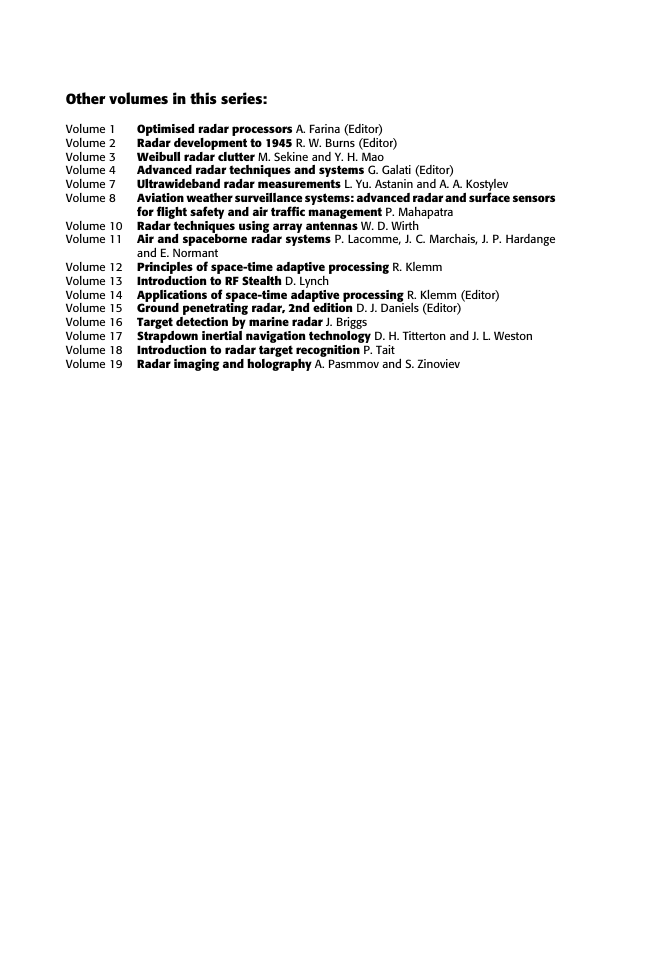
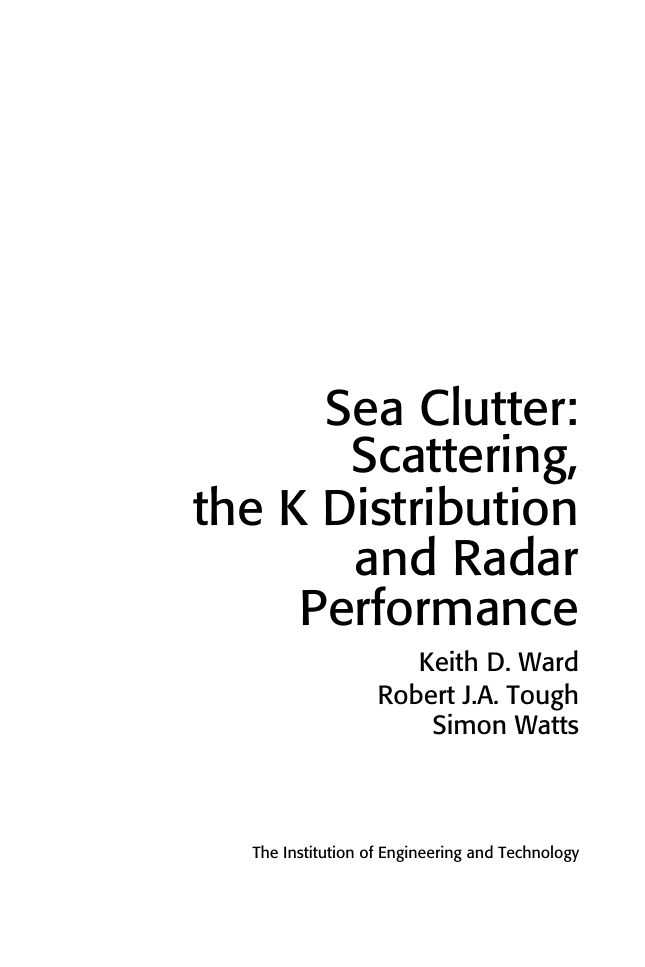
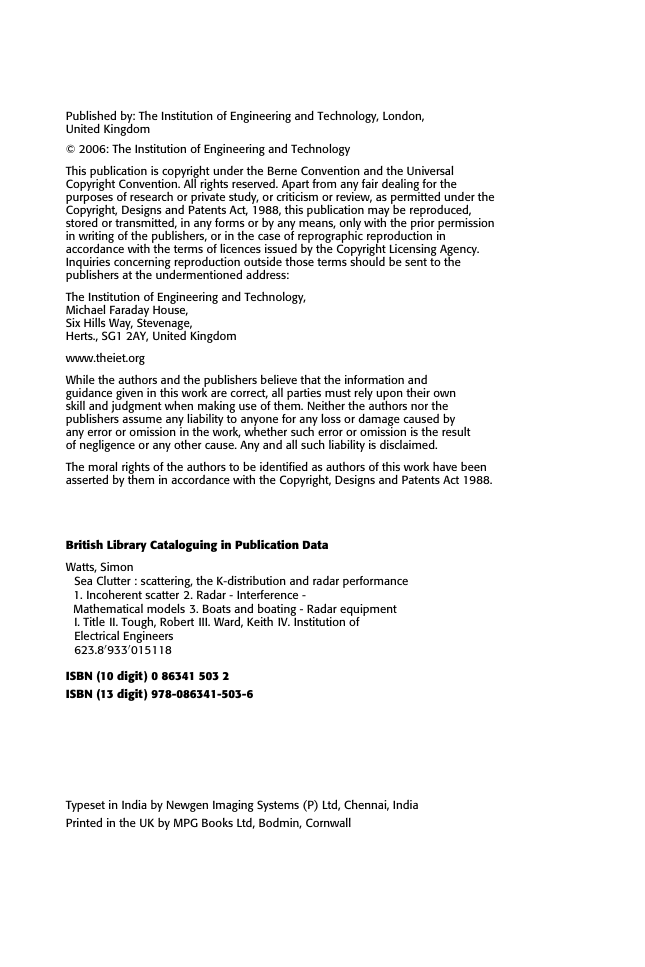
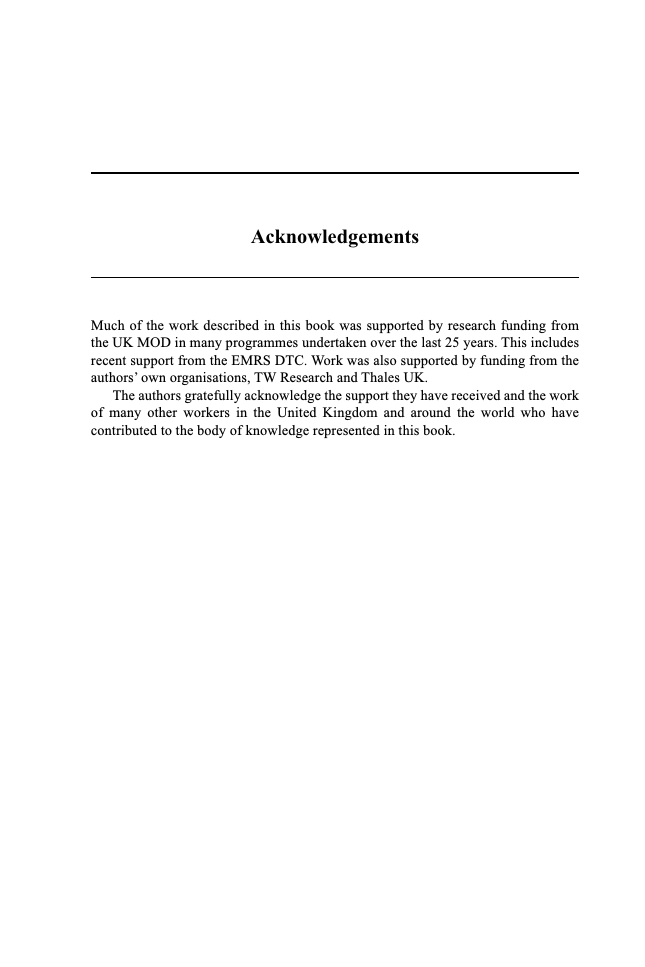

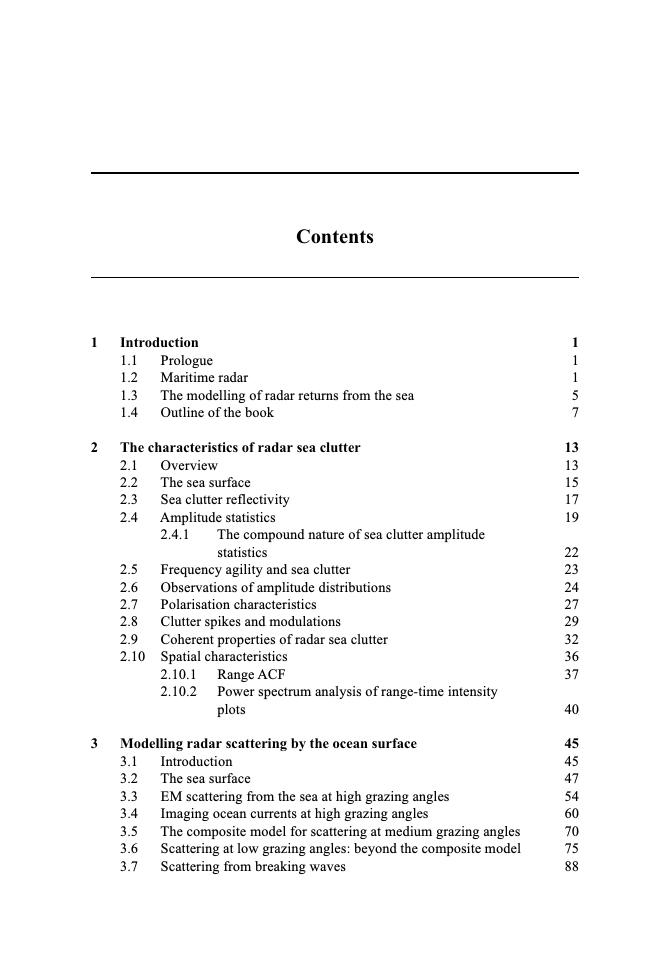








 2023年江西萍乡中考道德与法治真题及答案.doc
2023年江西萍乡中考道德与法治真题及答案.doc 2012年重庆南川中考生物真题及答案.doc
2012年重庆南川中考生物真题及答案.doc 2013年江西师范大学地理学综合及文艺理论基础考研真题.doc
2013年江西师范大学地理学综合及文艺理论基础考研真题.doc 2020年四川甘孜小升初语文真题及答案I卷.doc
2020年四川甘孜小升初语文真题及答案I卷.doc 2020年注册岩土工程师专业基础考试真题及答案.doc
2020年注册岩土工程师专业基础考试真题及答案.doc 2023-2024学年福建省厦门市九年级上学期数学月考试题及答案.doc
2023-2024学年福建省厦门市九年级上学期数学月考试题及答案.doc 2021-2022学年辽宁省沈阳市大东区九年级上学期语文期末试题及答案.doc
2021-2022学年辽宁省沈阳市大东区九年级上学期语文期末试题及答案.doc 2022-2023学年北京东城区初三第一学期物理期末试卷及答案.doc
2022-2023学年北京东城区初三第一学期物理期末试卷及答案.doc 2018上半年江西教师资格初中地理学科知识与教学能力真题及答案.doc
2018上半年江西教师资格初中地理学科知识与教学能力真题及答案.doc 2012年河北国家公务员申论考试真题及答案-省级.doc
2012年河北国家公务员申论考试真题及答案-省级.doc 2020-2021学年江苏省扬州市江都区邵樊片九年级上学期数学第一次质量检测试题及答案.doc
2020-2021学年江苏省扬州市江都区邵樊片九年级上学期数学第一次质量检测试题及答案.doc 2022下半年黑龙江教师资格证中学综合素质真题及答案.doc
2022下半年黑龙江教师资格证中学综合素质真题及答案.doc